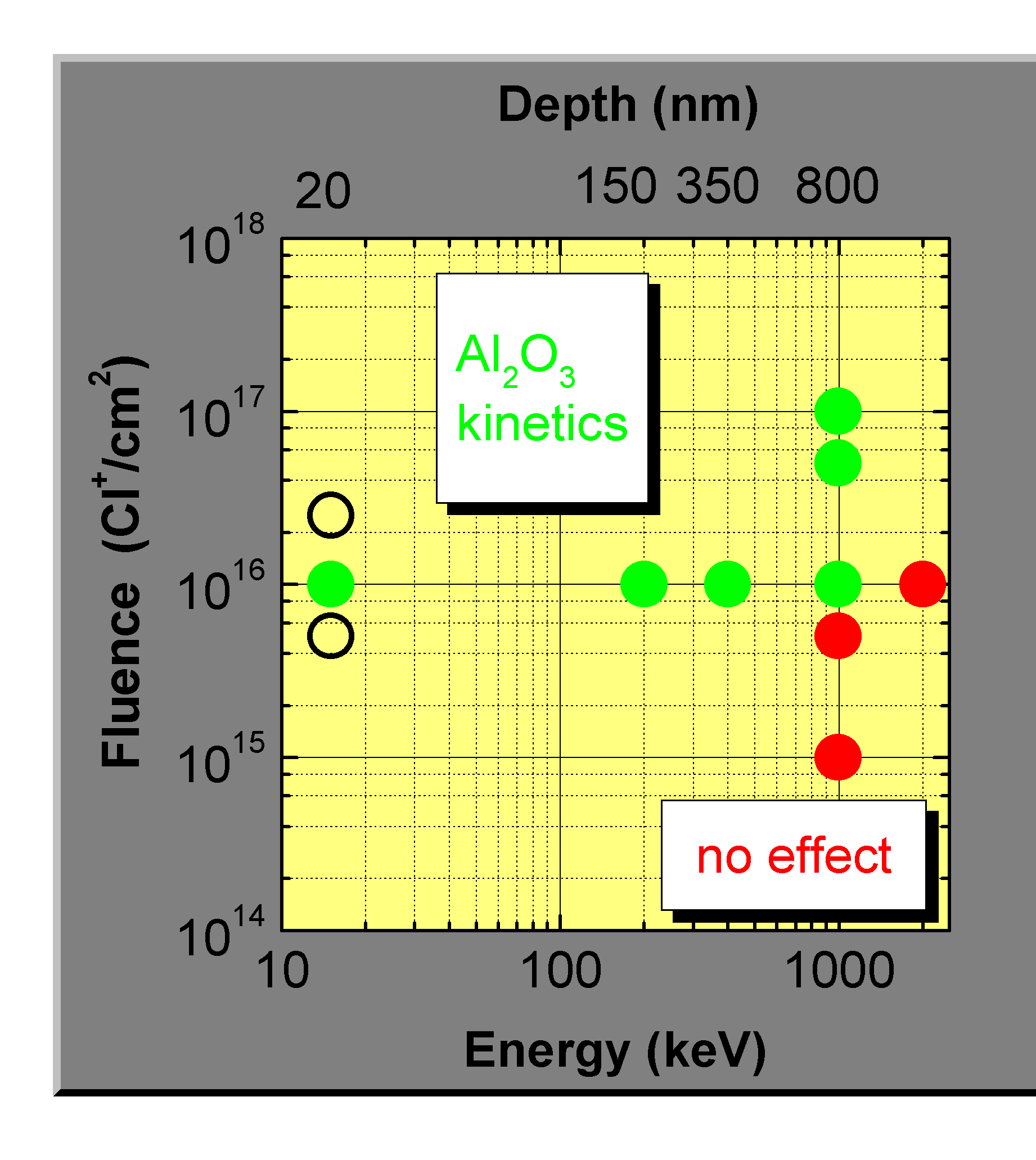Improvement of the high temperature oxidation behavior of TiAl via Ion implantation
Introduction
g-TiAl based intermetallic compounds are very promising for structural materials in high temperature application, because of the low density of 3.6 g/cm3. The problems, which hinder the use of this material, are the low ductility at room temperature and the oxidation above 700 °C. In particular in aircraft turbines they can replace the superalloys as turbine blades, which could lower kerosene consumption substantially..Alloying of ternary elements in order to improve the oxidation resistance usually has a negative influence on the mechanical properties. Up to now, there is no good alloy composition for ductile and high temperature resistant TiAl alloy available.
Ion implantation gives the possibility to improve both properties separately. On the other hand a quick and precise alloying of the surface is possible. Different elements were implanted (e.g. Cl, Si, Mo, B, F, J, etc.)
Implantation of Chlorine
Most promising element to improve the oxidation resistance is Chlorine. Because the mechanism of the protection is catalytic, the needed fluence is small. A detailed investigation of the effect led to the assumption that a selective mass transport via volatile chlorides is the substantial part of the mechanism. This model was set up mainly due to thermodynamic considerations. The experimental examination is possible by systematic ion implantations and ratify the model.

Publications:
Schumacher, G., Lang, C., Schütze, M., Hornauer,
U., Richter, E., Wieser, E., Möller, W.
Improvement of the Oxidation Resistance of g-
Titanium Aluminides by Microalloying with Chlorine using Ion Implantation
Materials and Corrosion 50, (1999) 162-165
Hornauer, U., Richter, E., Wieser, E., Möller, W.,
Schumacher, G., Lang, C., Schütze, M.
Improvement of the High Temperature Oxidation Resistance
of Ti50Al via Ion Implantation
Nucl. Instr. Meth. B, B 148 (1999) 858
Schumacher, Gerd; Dettenwanger, Franz; Schütze, Michael;
Hornauer, Ulrich; Richter, Edgar; Wieser, Egbert; Möller, Wolfhard
Microalloying effects in the oxidation of TiAl Materials
Intermetallics Vol. 7 10 (1999) 1113-1120
Hornauer, Ulrich; Günzel, Reinhard; Reuther, Helfried;
Richter, Edgar; Wieser, Egbert; Möller, Wolfhard; Schumacher, Gerd;
Dettenwanger, Franz; Schütze, Michael
Protection of gamma-based TiAl against High Temperature
Oxidation using Ion Implantation of chlorine
Surface and Coatings Technology (in print)
U. Hornauer, E. Richter, W. Matz, H. Reuther, A. Mücklich,
E. Wieser, W. Möller, and G. Schumacher, M. Schütze
Microstructure and Oxidation Kinetics of Intermetallic
TiAl after Si- and Mo- Ion-Implantation
Proceedings SMMIB 99 (accepted)

